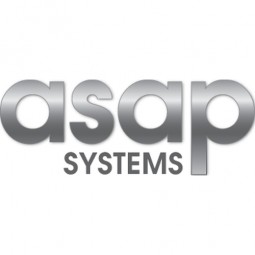Technology Category
- Functional Applications - Enterprise Asset Management Systems (EAM)
Applicable Industries
- Cities & Municipalities
- Education
Use Cases
- Real-Time Location System (RTLS)
- Track & Trace of Assets
Services
- System Integration
- Training
About The Customer
Richland School District 2 is a school district based in South Carolina. The district is committed to creating, sustaining, and investing in a culture and environment of excellence where all students are given the opportunity to maximize their gifts and talents. This is achieved across their numerous schools by creating specialized programs to meet the educational needs of all their students. The district has hundreds of expensive assets at their disposal, including laptops, tablets, other technology, and furniture. However, they lacked a proper system to track these assets, leading to potential losses and inefficiencies.
The Challenge
Richland School District 2, a South Carolina-based educational institution, was facing significant challenges in tracking their assets. The school district, which is dedicated to creating an environment of excellence for all students, had hundreds of expensive assets at their disposal. However, they lacked a proper system to track these assets, leading to potential losses amounting to thousands of dollars. Their existing method of using spreadsheets for asset tracking was outdated, error-prone, and lacked visibility and an audit trail. This manual method was not only time-consuming but also prone to human errors, leading to inaccuracies in data. The school district was in dire need of a modern, efficient, and accurate asset tracking system to replace their spreadsheet-based method.
The Solution
Recognizing the inefficiencies of their existing asset tracking method, Richland School District 2 decided to adopt a dedicated asset management system. After exploring various options, they chose ASAP Systems' web-based solution due to its advanced tracking features, user-friendly interface, and quick learning curve. The cloud-based Education Asset Tracking System allowed the school district to modernize their tracking techniques, bringing them on par with other high-tech school districts. The system was used to track laptops, tablets, other technology, and furniture. The school district also utilized the advanced reporting feature of the system to create reports in a format that was easily understandable to all employees. The Asset Cycle Counts feature facilitated physical inventory checks and updated their data based on the counts. The school district expanded their subscription after a few months, appreciating the system's easy learning curve, excellent support, advanced features, capability to set up different user levels, and the ability to configure the dashboards to fit their preferences.
Operational Impact

Case Study missing?
Start adding your own!
Register with your work email and create a new case study profile for your business.
Related Case Studies.

Case Study
Turning A Stadium Into A Smart Building
Honeywell created what it called the “intelligent system” for the National Stadium in Beijing, China, turning the venue for the opening and closing events at the 2008 Summer Olympics into a “smart building.” Designed by highly controversial artist Ai Weiwei, the “Bird’s Nest” remains one of the most impressive feats of stadium architecture in the world. The 250,000 square meter structure housed more than 100,000 athletes and spectators at a time. To accommodate such capacity, China turned to Honeywell’s EBI Integrated Building Management System to create an integrated “intelligent system” for improved building security, safety and energy efficiency.
.png)
Case Study
Smart Street Light Network (Copenhagen)
Key stakeholders are taking a comprehensive approach to rethinking smart city innovation. City leaders have collaborated through partnerships involving government, research institutions and solution providers. The Copenhagen Solutions Lab is one of the leading organizations at the forefront of this movement. By bringing together manufacturers with municipal buyers, the Copenhagen Solutions Lab has catalyzed the development and deployment of next-generation smart city innovations. Copenhagen is leveraging this unique approach to accelerate the implementation of smart city solutions. One of the primary focus areas is LED street lighting.

Case Study
Buoy Status Monitoring with LoRa
The Netherlands are well-known for their inland waterways, canals, sluices and of course port activities. The Dutch Ministry of Infrastructure indicates that there are thousands of buoys and fixed items in and near water environments that would profit from IoT monitoring. One of the problems with buoys for example, is that they get hit by ships and the anchor cable breaks. Without connectivity, it takes quite some time to find out that something has happened with that buoy. Not to mention the costs of renting a boat to go to the buoy to fix it. Another important issue, is that there is no real-time monitoring of the buoys at this moment. Only by physically visiting the object on the water, one gains insight in its status.

Case Study
Barcelona Case Study
Barcelona’s heavy traffic and its associated high levels of pollution were the primary factors that motivated some companies and universities to work on strategies for improving traffic in the city centre. Bitcarrier is one of the technologies involved in the In4Mo Project, whose main objective is to develop the applications that form the core of smart mobility, one of the fundamental pillars of the smart city concept.

Case Study
China Mobile Smart Parking
Smart Parking, powered by NB-IoT technology, is making it easier for drivers to find free parking spots. Cities can better manage their parking assets and maximize the revenue available to them as a result. Drivers searching for parking create congestion and pollution by circling and hunting for available parking. Smart Parking services are able to significantly ease these problems by guiding a driver directly to a parking space.








